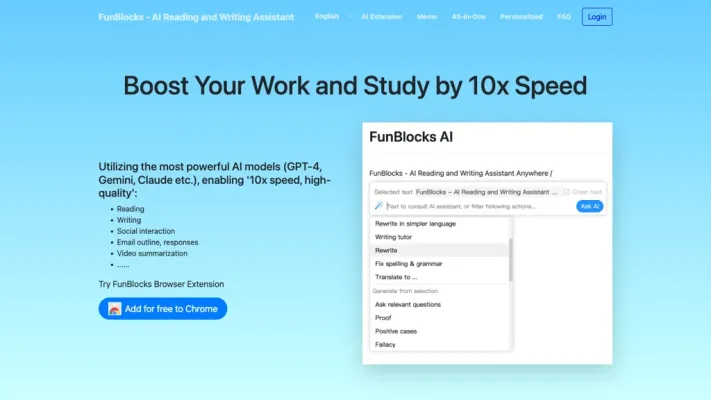
Autoblocks 2.0
What is Autoblocks 2.0?
Autoblocks 2.0 by GenAI is a powerful tool designed to help teams continuously improve and scale AI-powered products with speed and confidence. With Autoblocks, users can evaluate and analyze user outcomes to gain actionable insights from interactions, cluster and analyze user feedback to inform testing and product decisions, and connect tests to user behavior to visualize and associate with business goals for increased retention. This AI tool allows users to add test cases based on real user interactions to grow a robust testing library, test and evaluate product changes to turbocharge the local testing process, and A/B test prompts and contexts to identify winning variants. Autoblocks facilitates the creation and modification of test cases on the fly, integrates regression testing into CI workflows, and offers efficient debugging of user interactions to enhance overall experiences. This tool also enables proactive monitoring and addressing of prompt and evaluation drift in real-time, ensuring product robustness and accuracy. Autoblocks promotes seamless collaboration among product teams, facilitating faster iteration and empowering users to build AI products the way they want within an enterprise-grade, scalable, and collaborative environment supported by a team of AI experts.
KEY FEATURES
- ✔️ Evaluate and analyze user outcomes.
- ✔️ Cluster and analyze user feedback.
- ✔️ Connect tests to user behavior.
- ✔️ Add test cases based on real user interactions.
- ✔️ A/B test prompts and contexts.
USE CASES
- Utilize Autoblocks to analyze user outcomes and derive actionable insights, enabling teams to continuously improve AI-powered products with speed and confidence.
- Cluster and analyze user feedback using Autoblocks to make informed testing and product decisions, helping teams scale efficiently while ensuring user-centric development.
- Connect tests to user behavior with Autoblocks to visualize and align with business goals, ultimately enhancing product retention through data-driven optimization.



